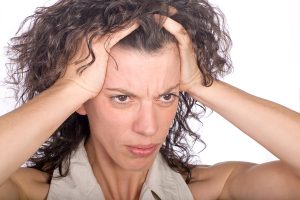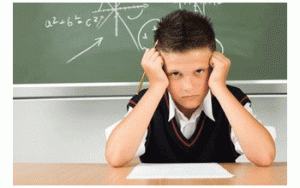Recently a review article was published that showed that anxiety is common. This research was conducted in England (Cambridge and London). 48 reviews about anxiety around the globe were examined. The results showed that anxiety in the world population fluctuates between 3.8–25%. Women (frequencies of 5.2–8.7%) and young adults (frequency 2.5–9.1%) are suffering from anxiety more. Among people with chronic diseases there is considerable variation in the frequency of associated anxiety (from 1.4% to 70%).
Variability of frequency of anxiety in different countries
The frequency of anxiety in various ethnic populations varies considerably around the world. For instance European and North American cultures have a relatively high anxiety rate in the population (3.8–10.4%) when compared to Indian and Asian cultures with only 2.8%. In Africa the rate is 4.4%, in Central and Eastern European countries the rate is 3.2%. In North Africa and the Middle East the anxiety rate is 4.9% while in Spanish/Latin cultures the rate is 6.2%.
Anxiety is common and there are subtypes
There are many subtypes of anxiety that have been researched.
Generalized anxiety disorder (GAD)
This disorder affects 6.8 million adults, or 3.1% of the U.S. population. It seems like women get this condition twice as often as men. The risk for developing it is greatest between childhood and midlife. People with a mild case of GAD can cope and work. Severe cases can be disabling and may be difficult to treat.
Social anxiety disorder
About 15 million US citizens suffer from this. This equally affects women and men. Typically it starts at the age of 13, but 36% of people will not ask for medical help for 10 years or more. Symptoms of anxiety surrounding social situations are so intense that it interferes severely with making friends and having romantic relationships. They end up being alone, powerless against their anxiety.
Panic disorder
6 million US citizens or 2.7% of the population suffer from this. Women commonly are twice as often affected by it than men. Panic attacks develop in early adulthood. They often suffer in silence; distance themselves from friends, family and caregivers who could offer them help. Panic disorders often occur simultaneously with depression and medical conditions like asthma, irritable bowel syndrome and substance abuse.
Specific phobias
19 million or 8.7% of the US population suffer from this. It often starts in childhood and the median onset is at age 7. People affected by specific phobias may be afraid of high bridges, of animals like spiders or mice, of thunder, of flying and a myriad of other things. It disrupts daily routines, causes limitations of work efficiency and reduces self-esteem. It also places a strain on relationships because people afflicted by this problem will do whatever they can to avoid the uncomfortable or terrifying feelings of phobic anxiety.
Obsessive-compulsive disorder
2 million or 1% of the population in the US suffer from this form of anxiety. Onset is in the teenage years, although 1/3 of adults with obsessive-compulsive disorder experienced symptoms already in childhood.
Posttraumatic stress disorder (PTSD)
7 million people or 3.5% of the US population are suffering from PTSD. Women are much more affected by PTSD than men. But a lot of soldiers who were involved in direct combat situations will suffer from PTSD. Rape can be a source of PTSD. Most people who experience traumatic events and develop PTSD will be affected by it for months or even years, but eventually recover from them; a minority will not recover. Often therapy is helpful for these individuals.
Major depressive disorder
8 million American adults or about 6.7% of the U.S population will suffer from depression between the ages of 15 and 44 years. It is more common among women. A certain percentage of depressed people commit suicide. Anxiety is often mixed in with depression.
Persistent depressive disorder
This is a form of depression that persists for at least 2 years. 1.5% of the US population or 3.3 million adults suffer from this condition. The median onset is at age 31. Like with depression, so also with persistent depressive disorder, anxiety is very common.
Anxiety is common; related illnesses
There are many medical diagnoses where anxiety is often part of the symptom complex. The medical profession often talks about psychosomatic diseases. This means that these diseases have an anxiety overlay, which is part of the condition.
- For instance, bipolar disorder is a condition where extreme mood swings are common, often between elation and mania, but then switching to deep depression with suicidal thoughts. Mixed into this condition is often a certain degree of anxiety, which can be very overwhelming.
- Irritable bowel syndrome is a psychosomatic disease of the gut with bowel cramps and frequent bowel movements, in others there are periods of constipation. But irritable bowel syndrome often has anxiety attached to it. They are often inseparable.
Eating and sleep disorders
- Eating disorders: here the person has an intense fear of turning fat. Persons with eating disorder often restrict their calories severely, even when they are underweight. They may exercise for hours with the hope to lose weight. Perhaps the most striking condition among eating disorders is anorexia nervosa, which often affects teenage females, but adult women are affected as well. Sadly many of these women die from starvation or starvation related diseases.
- Sleep disorders: more than 40 million Americans suffer from chronic, long-term sleeping disorder. Another 20 million suffer from occasional sleep disorder. In addition, often there is stress and anxiety that interferes with the normal sleep cycle.
Chronic pain and fibromyalgia
- Chronic pain: Pain is a common symptom; if it is associated with a surgical procedure or with an injury it is short lived and eventually goes away. With chronic pain, the pain is present all the time. People with arthritis or nerve injuries that did not heal often have this type of pain. Fibromyalgia sufferers also have this type of pain. When a person has an underlying anxiety disorder and gets chronic pain on top of this, the pain is amplified and becomes even more chronic. On the other hand anybody with chronic pain will suffer from a certain amount of anxiety just because of the chronicity of the pain.
- Fibromyalgia: this chronic musculoskeletal pain disorder is a special form of chronic pain. About 20% of fibromyalgia sufferers have either chronic depression or chronic anxiety, which certainly complicates the condition.
Substance abuse, stress and headaches
- Substance abuse: about 20% of people with chronic anxiety disorders have an alcohol or substance abuse disorder; and 20% of people abusing alcohol or having a substance abuse disorder have a chronic anxiety disorder.
- Stress: too much stress can turn into distress. Distress is an overdose of stress where the stressed person loses control of the situation. This can cause depression and anxiety. It can also cause physical illness.
- Headaches: migraines, anxiety and depression seem to affect the same population group. Stress and anxiety can cause muscles around the neck to get into spasms and cause tension type headaches. But any headache can be brought on by anxiety.
Anxiety is common; biochemical brain abnormalities
Dr. Kharrazian has summarized in his book that Gamma-aminobutyric acid (GABA), which is a by-product of the brain cell metabolism is responsible for calming the brain (Ref.1). Most noteworthy, this mechanism is not working properly in people with anxiety. In many people with anxiety GABA is simply not produced enough to calm the brain or it gets inactivated too fast resulting in a lack of GABA with anxiety. Consequently, the end result is the same: when there is a relative lack of GABA in the brain the person develops symptoms of anxiety.
Disbalances in neurotransmitters
Disbalances in other neurotransmitters can also contribute to anxiety. As a matter of fact, serotonin is a neurotransmitter that is essential to have for a stable mood and to prevent depression. It is produced in the mid brain. Furthermore, the pineal gland stores serotonin and makes melatonin out of it, which is essential for a normal sleep pattern. When serotonin is low, a number of things can happen. Anger and increased aggressiveness are associated with a lack of serotonin. But depression, obsessive-compulsive disorder, migraines, fibromyalgia, irritable bowel syndrome, bipolar disorder and anxiety disorder are also frequently observed. Many of these illnesses have been noted above to be associated with anxiety. Ref.1 also describes that stress inhibits the conversion of serotonin into melatonin, which therefore explains sleep problems in persons who are exposed to chronic stress.
Anxiety is common; treatment options
In particular, what are the treatment options for a person with anxiety?
Treatment with anxiolytics
It is tempting to just treat the symptoms in an anxious person. But just prescribing anxiolytics like benzodiazepines (like Xanax) will not cure anxiety, just relieve the symptoms for a while. Eventually the body gets used to benzodiazepine and requires higher doses to suppress the anxiety. This can be the beginning of drug dependency, which is not what the health professional or the patient wants. As mentioned above alcohol and substance abuse is already a problem for 1 in 5 people with anxiety.
Treat sleep deprivation
An alternative is to concentrate on treating sleep deprivation in order to help the person to get a good night’s sleep. Melatonin at a dose of 3 mg at bedtime is a reasonable dose to help a person to fall asleep. If during the night the anxious person wakes up again, another dose of 3 mg of melatonin can be given. In addition, if an anxious person lies in bed and ruminates about various things that have happened during the day, a dose of valerian root (500 mg or even 1000 mg) can be useful.
Brain hormone effects
Dr. Datis Kharrazian describes in Ref.1 that valerian root increases GABA at the GABA receptor site. Research has also shown that valerian root slows down the breakdown of GABA. Although GABA is available in health food stores, GABA does not get absorbed through the blood/brain barrier easily. Only patients with autoimmune problems have a leaky blood/brain barrier and GABA can get through, but this is not a good approach to take for treating GABA deficiency. When you take GABA as a supplement, it wears off after a few days and loses its effect. It is wiser to stay away from GABA.
Cognitive therapy and behavioral therapy
This has been proven to help the person with anxiety. Often psychologists specialize in these treatment methods. Meditation and counseling therapy will also help.
Antidepressant therapy
In anxiety cases where depression is part of the psychological make-up antidepressants may have a place for a period of time. The FDA issued a warning in October 2004 about antidepressant medications, including SSRIs. These may lead to suicide and suicidal behavior in a small number of children and adolescents. But there is no way of predicting who will be affected this way. The antidepressant medications are still available and many physicians still prescribe them.
A balanced diet
A balanced diet like a Mediterranean diet provides the nutrients necessary to make GABA. People should avoid sugar in any form as it contributes to anxiety from blood sugar fluctuations.
Yoga and biofeedback
Yoga with an emphasis on breathing techniques can also be useful. Biofeedback methods are useful as well.
Conclusion
Anxiety is common, but also very complex, as explained above. 74.8 million Americans suffer from the various forms of anxiety mentioned. Psychosomatic disease often involves anxiety as well and it can be difficult to sort out the symptoms of patients afflicted with physical illness and anxiety. Repeat visits to the treating doctor will eventually help sort these problems out. The physician will rule out any physical problems first by doing lab tests and imaging studies.
Treating anxiety should focus on reestablishing a healthy sleeping pattern. Self-hypnosis tapes or discs are useful. Melatonin and valerian root have their place. Cognitive-behavioral therapy will help the patient to reestablish clear thoughts and minimize the anxiety symptoms. With this approach the patient will often be able to overcome anxiety. There are no instant solutions, but with time and persistence the patient will be able to take back control of his or her life.
Reference
Ref. 1: Dr. Datis Kharrazian: “Why Isn’t My Brain Working?” © 2013, Elephant Press, Carlsbad, CA 92011








